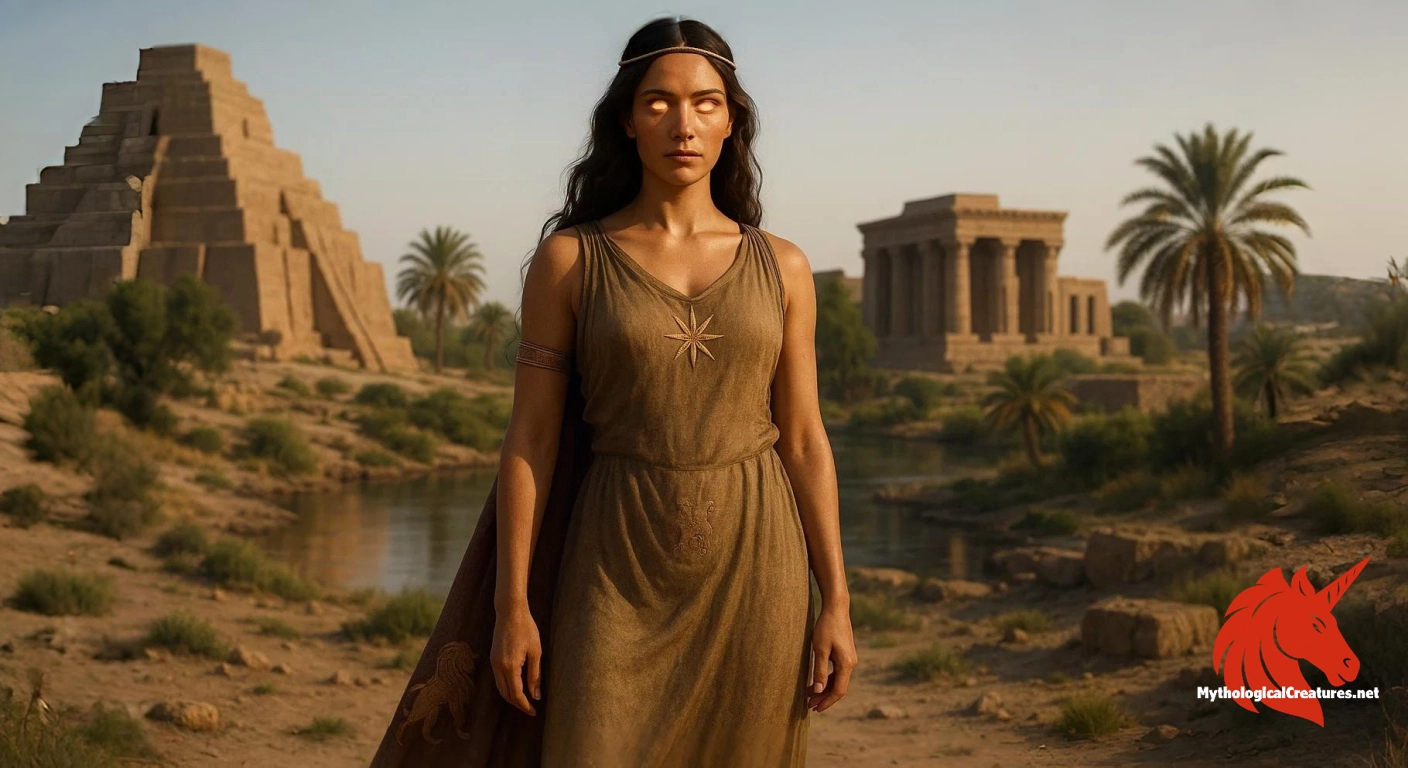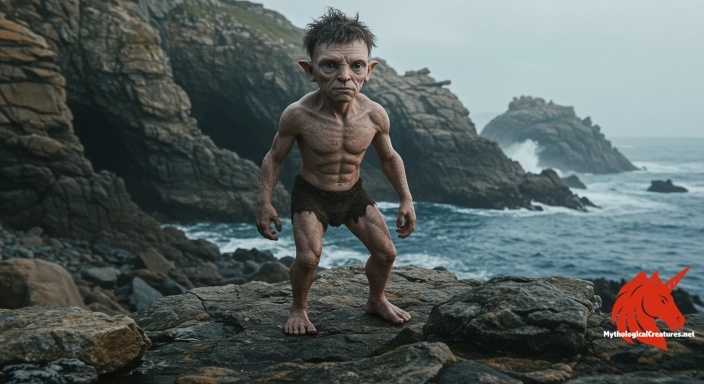Inanna: Inanna is the ancient Mesopotamian goddess of love, war, and fertility, known as the Queen of Heaven.

Inanna
Inanna - One of the most venerated deities whose influence extended across Mesopotamian civilizations and impacted later mythologies
Origins & First Encounters
Inanna stands as one of the most celebrated and multifaceted deities in ancient Mesopotamian tradition, combining traits of love, war, and fertility into a single, dynamic persona. Her origins can be traced back to early Sumerian civilisation, with her first veneration rooted in the flourishing city of Uruk. Emerging as a central figure in the Eanna temple, she was revered for embodying both the nurturing and destructive forces of life. Over time, her identity expanded under the name Ishtar, allowing her worship to spread among the Akkadians, Babylonians and Assyrians. She was known not only as a goddess of passion but also as an arbiter of divine law and political power, thus bridging the celestial and the earthly. Inanna’s varied epithets and mythic narratives reveal a depth that encircles every aspect of human society, from fertility to warfare. Her myths, including her profound descent into and return from the underworld, symbolise the eternal cycles of death and rebirth. Through her divine mandate, she represented the full spectrum of civilisation’s gifts and curses. Her legacy, carved into the annals of early history, continues to illuminate the rich complexities of ancient spirituality. This enduring influence underscores why Inanna remains a subject of both historical admiration and modern reinterpretation.
Source Texts & Tale Variants
The corpus of ancient texts preserves an extensive record of Inanna’s legacy, with cuneiform tablets and hymns offering detailed glimpses into her character and deeds. Numerous Sumerian poems recount her heroic acts while integrating her into the fabric of everyday life, reflecting a deity who oversaw both pleasure and retribution. Stories such as her famed descent into the underworld are preserved in mythological narratives that illustrate her transformative journey and eternal power. Versions of the Epic of Gilgamesh also incorporate episodes featuring her dynamic encounter with mortal heroes, thereby underscoring her dual nature. In inscriptions from Uruk and beyond, the texts meticulously detail her multifarious roles and contributions to Mesopotamian society. Ritual prayers and incantations reveal the personal and collective devotion in her worship, capturing the emotional breadth of her character. Various story variants, including distinctions as morning and evening manifestations, speak to her connection with the celestial cycle of Venus. Over time, these primary sources were reinterpreted and elaborated upon by successive cultures, adding layers of complexity to her mythos. The evolution of her narrative in diverse texts also reflects the fluid interplay between regional tradition and overarching religious themes. Throughout the centuries, the rich diversity of sources has ensured that Inanna’s stories remain one of the most intriguing aspects of ancient mythology.
Form & Powers
Artistic depictions of Inanna reveal a divine figure endowed with both ethereal beauty and commanding strength. She is often portrayed adorned in ornate, flowing garments that highlight her elegance while echoing the grandeur of divine authority. A distinctive element in her iconography is the horned crown, a visual emblem that signifies her elevated status as the Queen of Heaven. The eight-pointed star frequently accompanies her image, symbolising her association with the planet Venus and its cyclic phases. Her visage, rendered with intricate detail in ancient reliefs and cylinder seals, often balances a gentle yet resolute expression that mirrors her dual roles in love and conflict. Detailed jewellery and elaborate headdresses accentuate a figure who is both sensual and formidable. The inclusion of lion motifs around her further underlines her prowess and ferocity, merging beauty with martial might. Variations in her depictions – from subtly nuanced facial features to elaborate ornamental designs – reflect regional artistic choices and evolving cultural ideals. The interplay of soft curves in her attire with bold, symbolic elements serves to encapsulate the inherent tensions in her divine nature. Across various media, her imagery has been skilfully adapted to communicate the layered aspects of her personality, blending celestial grace with terrestrial power.
Regional Faces
The portrayal of Inanna is marked by notable regional adaptations that underscore the diversity of ancient Near Eastern religious practice. In her birthplace of Sumer, she was intricately linked with urban life and civic authority, where her role was deeply entwined with the prosperity of Uruk. As her cult spread into Akkadian and later Assyrian territories, she evolved into Ishtar, with local traditions infusing her image with an even stronger martial aspect. Distinct manifestations, such as the differentiation between morning and evening forms, highlight her celestial associations and the varied theological nuances across regions. In some areas, artistic renderings emphasised her nurturing, fertility-bestowing qualities while in others her warrior-like vigour was accentuated. Local temple rituals, festivals and iconographic details adapted her narrative to the social and environmental conditions of each locale. The integration of indigenous beliefs with her established myth allowed communities to project their own values onto her persona. This melding of traditions is evident in the varying stylistic and symbolic representations seen throughout the ancient Near East. These regional variations not only demonstrate the adaptability of her myth but also underscore the universal appeal of her divine attributes. Ultimately, the myriad ways in which her image was interpreted serve as a testament to her enduring presence in diverse cultural contexts.
Cultural Parallels
Inanna’s complex persona finds intriguing parallels in numerous other pantheons across the ancient world, suggesting a shared human fascination with the interplay between love, war and regeneration. Her multifaceted character, celebrated for both sensuality and destructive strength, invites comparisons with the Phoenician Astarte and the Ugaritic Ashtart, deities who similarly bridged nurturing and martial realms. The rich narrative traditions surrounding her mirror aspects of the Greek goddess Aphrodite, whose own mythos is interwoven with both beauty and formidable retribution. Common symbolic motifs, such as the lion and the celestial star, recur across these divine traditions, reflecting a shared iconographic vocabulary. The dualistic nature of Inanna, balancing creation and destruction, is echoed in other mythic figures, thereby highlighting a universal archetype of the divine feminine. Comparative studies reveal that such figures often serve as mediators between the mortal and the divine, encapsulating the rhythms of seasonal change and human emotion. The close interconnections between her narrative and those of later cultural icons underscore a lasting legacy of mythic resonance. A cross-cultural analysis not only enriches our understanding of Inanna’s character but also emphasises the broader appeal of her themes. These interlinked mythologies provide fertile ground for exploring how ancient societies grappled with the complexities of life and power. In essence, Inanna’s narrative acts as a bridge between diverse cultural expressions, offering insights into a shared spiritual heritage.
Legacy & Modern Evolution
The evolution of Inanna’s myth reflects a remarkable journey from an ancient object of worship to a modern symbol of empowerment and complexity. Initially revered as a potent deity whose attributes merged nurturing love with intransigent retribution, she later became a cornerstone of the Akkadian, Babylonian and Assyrian pantheons. Over centuries, her image and narrative adapted to the changing social and religious landscapes, reflecting both the decline of polytheistic rituals and the rise of new ideologies. The dramatic myth of her descent into the underworld, in particular, has captured the imagination of generations, offering timeless insights into themes of mortality and rebirth. With the gradual spread of monotheistic religions, her cult diminished, yet the stories and symbols associated with her continued to influence art, literature and later mythologies. In modern times, feminist theorists and contemporary mythographers have reinterpreted her legacy as a celebration of the multifaceted feminine spirit and resilience. Her dual nature, combining beauty with battlefield ferocity, resonates with modern discussions on gender, power and transformation. Artistic reinterpretations in literature, film and digital media have revitalised her narrative for new audiences. In academic circles, Inanna’s myth is frequently invoked to illustrate the perennial human fascination with the cycles of life and the paradoxical qualities of divinity. Ultimately, her legacy endures as a testament to the enduring appeal of myth, providing a narrative bridge between ancient ritual and modern reinterpretation.
Interesting Fact
Inanna's dual nature as both a nurturing figure and a vengeful enforcer of justice highlights the intricate and multifaceted qualities of ancient deities, mirroring the complex balance of life and death in human existence.
Quick Creature Info
Origin:
Associations:
Our Mythic Legendary Rating:

Also Sometimes Known As:
Habitat:
Supernatural Powers:
Physical Attributes:
Abilities:
Behavior:
Weaknesses:
Lore:
References
Discover Another Mythical Legend You May Not Have Heard Of?
Uncover the mysteries of ancient folklore and expand your knowledge of legendary beings from cultures around the world.
Dare to Meet the Jetins....
Mythical Disclaimer: The images and data on this site are derived from various historical and literary sources, but we have found that many myths often have multiple versions and interpretations across references, sometimes contradictory. As a result, these creature depictions are artistic interpretations—imaginative blends of folklore, legend, and a dash of AI guesswork. Because creature descriptions vary widely, our illustrations and accompanying information represent our best effort to honor mythology while bridging creative gaps. Enjoy these interpretations—just remember, we've done our best to respect the stories and validate available data, but in the realm of mythology, details often shift, imagination leads the way, and nothing is ever set in stone!
Curated by the Mythological Creatures Team (rev. May 2025)
